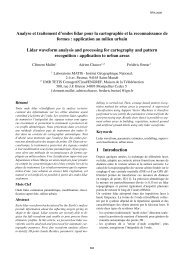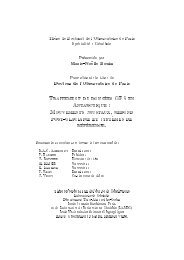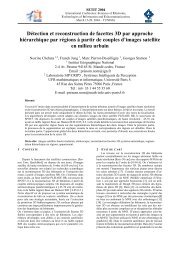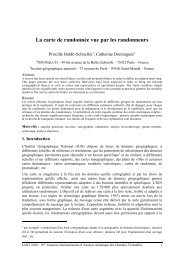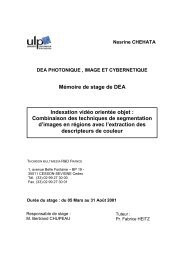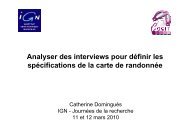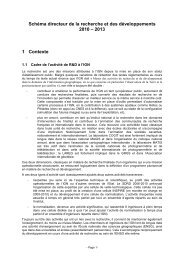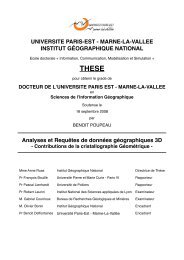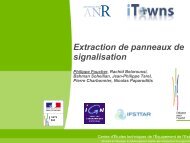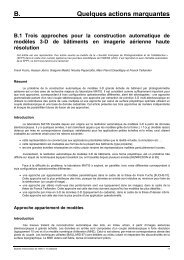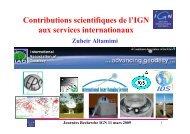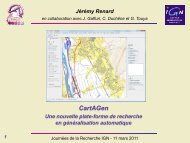Create successful ePaper yourself
Turn your PDF publications into a flip-book with our unique Google optimized e-Paper software.
Abstract<br />
This exploratory thesis prepares the U.S. DESDynI (Deformation, Ecosystem Structure<br />
and Dynamics of Ice) mission. To better understand and quantify the main errors affecting<br />
repeat-pass InSAR measurements, we studied the synergy between ALOS-PALSAR images<br />
and airborne LiDAR data acquired over the Piton de la Fournaise volcano (Reunion Island,<br />
France) in 2008 and 2009. We investigated how microwaves are affected by several types of<br />
volcanic terrains: some are covered by a vegetation canopy of variable density, others are bare<br />
surfaces that display a wide range of physical properties (a'a, pahoehoe or slabby pahoehoe<br />
lava flows, and lapilli).<br />
LiDAR data allowed us to build a high resolution digital terrain model of the volcano.<br />
We used it to remove the topographic contribution from the interferometric phase. The height<br />
anomaly map has been used to analyze the topographic variations of the volcano which may<br />
explain the loss of coherence observed over the Dolomieu crater between 2008 and 2009. We<br />
also calculated a canopy height model and showed that the higher the vegetation, the lower<br />
the coherence. Finally, the LiDAR intensity has been used to segment the image on the basis<br />
of the surface optical properties. It provides ancillary information on volcanic terrains, which<br />
allows to better evaluate the coherence loss terms.<br />
Additionally, the geometrical and physical properties of these surfaces have been<br />
measured in situ in October 2011. From digital photos, we have generated small digital terrain<br />
models at 1.2 mm spatial resolution using an automatic image matching method. We studied<br />
the surface roughness of the lava flows and lapilli thanks to five statistical parameters: the<br />
standard deviation of height, the correlation length, the Z s parameter, the tortuosity index, and<br />
the fractal dimension. This analysis helped us better understand how electromagnetic waves<br />
interact with such media: rough and porous surfaces, such as the a’a lava flows, produce<br />
multiple scattering and then a loss of coherence whereas smoother surfaces, such as the<br />
pahoehoe lava flows, are more coherent. Decorrelation over the lapilli is mainly caused by<br />
volumetric effects but it also depends on the dielectric constant of the medium. To assess the<br />
penetration depth of the radar waves into the medium, we measured the complex relative<br />
permittivity of volcanic rock samples in the lab. Results suggest that the penetration depth is<br />
higher in lapilli than in lava flows. Finally, we studied vegetation density: we produced a map<br />
of LAI (Leaf Area Index) from a SPOT 5 images and showed that the LAI negatively<br />
correlated with the radar coherence. For LAI values higher than 7, the coherence is very low<br />
which means that InSAR measurements become difficult to do or even impossible.<br />
xi




